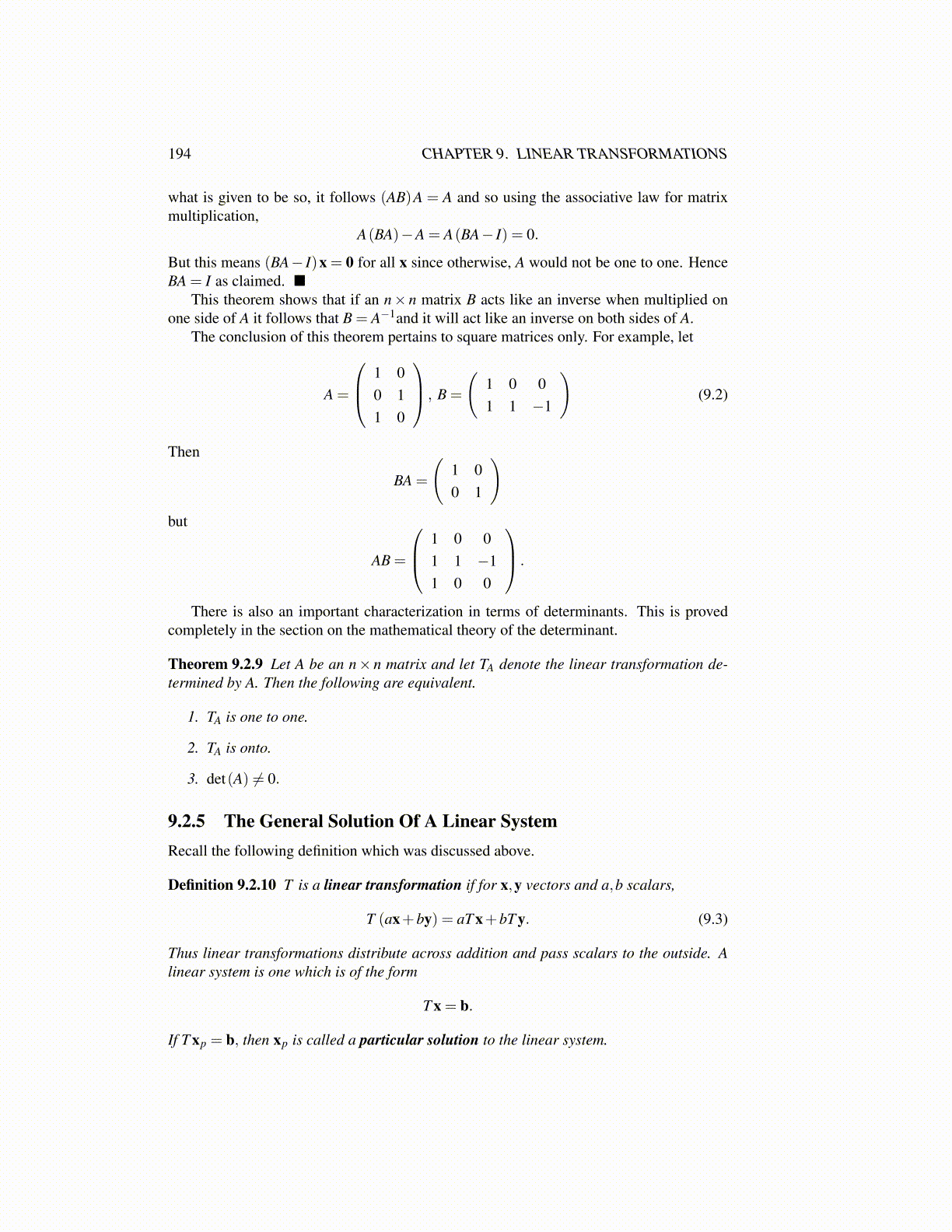
194 CHAPTER 9. LINEAR TRANSFORMATIONS
what is given to be so, it follows (AB)A = A and so using the associative law for matrixmultiplication,
A(BA)−A = A(BA− I) = 0.
But this means (BA− I)x = 0 for all x since otherwise, A would not be one to one. HenceBA = I as claimed. ■
This theorem shows that if an n× n matrix B acts like an inverse when multiplied onone side of A it follows that B = A−1and it will act like an inverse on both sides of A.
The conclusion of this theorem pertains to square matrices only. For example, let
A =
1 00 11 0
, B =
(1 0 01 1 −1
)(9.2)
Then
BA =
(1 00 1
)but
AB =
1 0 01 1 −11 0 0
.
There is also an important characterization in terms of determinants. This is provedcompletely in the section on the mathematical theory of the determinant.
Theorem 9.2.9 Let A be an n× n matrix and let TA denote the linear transformation de-termined by A. Then the following are equivalent.
1. TA is one to one.
2. TA is onto.
3. det(A) ̸= 0.
9.2.5 The General Solution Of A Linear SystemRecall the following definition which was discussed above.
Definition 9.2.10 T is a linear transformation if for x,y vectors and a,b scalars,
T (ax+by) = aT x+bT y. (9.3)
Thus linear transformations distribute across addition and pass scalars to the outside. Alinear system is one which is of the form
T x = b.
If T xp = b, then xp is called a particular solution to the linear system.